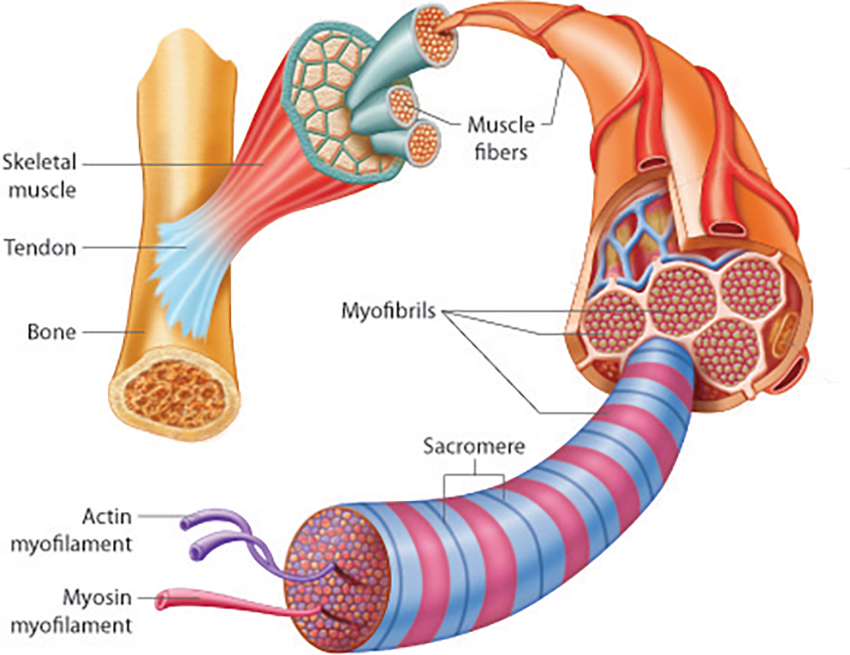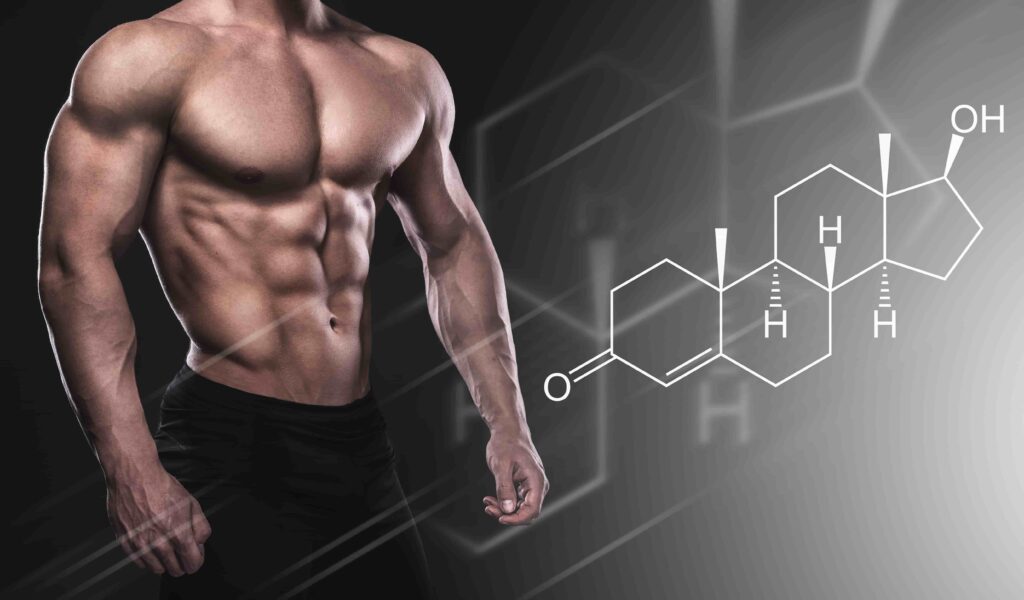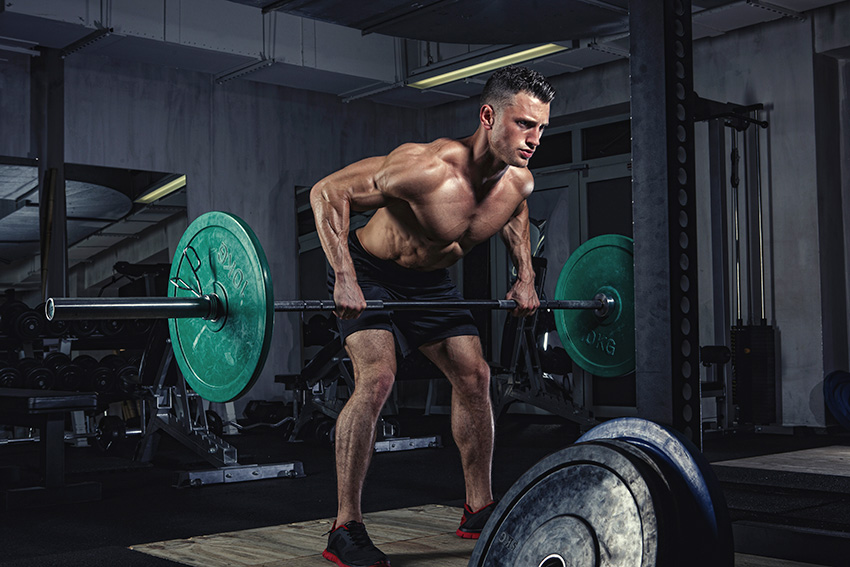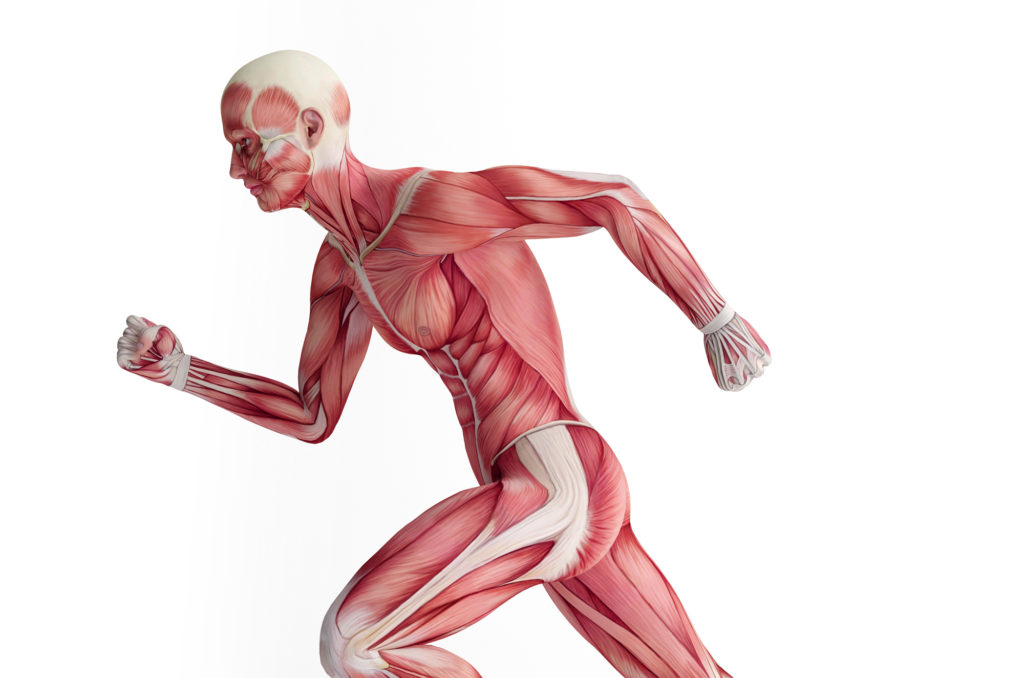A silver bullet for building muscle doesn’t exist.
An infinite amount of online content tries to sell you some magic muscle-building secret. Most of this content gives you poor advice. I often read articles that make me wonder if the content creator had ever built muscle before in their life.
Putting on new muscle is difficult. It requires around-the-clock maintenance and is just plain hard work.
If you are serious about building muscle and willing to put in the effort, this series of articles is for you.
This four-part article series will cover the essentials of how to build muscle. This article will cover the science behind muscle growth and the following three articles will cover the three pillars of building muscle: nutrition, weightlifting, and recovery. I’ll also cover actionable steps for you to follow to help you develop your physique.
In this article series, you will find many different studies referenced. Experts in the fitness industry conducted these studies, forming the foundation for the muscle-building advice in the articles.
Keep in mind that these studies aren’t perfect. Countless variables affect our ability to build muscle. It’s almost impossible to account for all these variables in studies.
The topic of building muscle can span far beyond a few articles. This article series will only cover the most crucial information on building muscle. You can conduct more research if you want a complete understanding of the topic.
In these articles, I will give you a roadmap for building muscle that anyone can follow and actionable steps to create a more muscular physique. These suggested steps give you the knowledge to start right now.
So bookmark these articles, take notes, and get ready to build some serious muscle!
Table of Contents
Muscle-Building Fundamentals

Our journey to building muscle will begin with the fundamentals.
We’ll first talk about the anatomy of your muscles to help you understand their structure. Then we’ll cover the physiological process of building muscle.
Do you need to understand the anatomy and physiology of muscles to put on muscle mass?
Well, no. You don’t need to know this to build muscle.
But taking the time to understand the basic science of your muscles will be worthwhile as it explains why the actionable steps work.
You’ll better understand how the three pillars interact with the muscle-building process. It’ll also give insight into why specific training methods, foods, or recovery techniques help you build muscle.
This understanding will give you a higher purpose in your muscle-building journey and help you stay disciplined and focused on your goal.
And trust me, you’ll need plenty of discipline and focus when trying to build muscle.
So let’s begin!
Don’t worry. I’ll explain the anatomy and physiology of muscles in plain English so it will be easy to understand.
Anatomy Of Your Muscles
Let’s start with the anatomy of your skeletal muscles.
Your body contains three types of muscles: skeletal, smooth, and cardiac.
The muscles that we want to build are the skeletal muscles.

These muscles attach to the bones and are responsible for voluntary skeletal movements controlled by your central nervous system.
We’ll start with two terms you may have heard before, muscle tissue and muscle fibers.
Your muscle tissue contains muscle fibers.
Muscle fibers consist of a single muscle cell. These fibers group together in your muscles and help your body move. This grouping of muscle fibers is what gives them that striated appearance. (1)
The anatomy of muscle fibers doesn’t stop there.
Let’s now go deeper into the anatomy of muscle fibers. This is where the essential muscle-building processes happen.

Within each muscle fiber are rod-like protein filaments called myofibrils.
Finally, in each myofibril are the sarcomeres. The sarcomere is the smallest functional unit of striated muscle tissue. (2)
A sarcomere contains two types of “myofilaments” or protein molecules called myosin and actin. These tiny fibers are where the actual contraction of the muscle begins. (2)
So, how do muscles grow?
Muscles grow by adding more myosin and actin to each muscle fiber. (3)
Okay! That wasn’t so hard, was it?
Let’s now go over an easy-to-understand explanation of the muscle growth process and how the anatomy fits into it.
The Physiological Process of Muscle Growth
When you put your muscles through intense exercise, you cause damage to your muscles. This damage releases immune system cells and inflammatory molecules that activate satellite cells.
Satellite cells are the primary stem cells in skeletal muscle. The satellite cells are responsible for the regulation of muscle growth and regeneration.
Activated satellite cells divide and spread to damaged muscle fibers. They then fuse to the muscle fibers to form new myofibrils. This fusion increases the thickness and number of myofibrils. (3)

After the fusion of satellite cells, the muscle fibers can synthesize more proteins and create more actin and myosin.
The result is the creation of new muscle.
Hormones also play a vital role in muscle growth and repair. The primary role of hormones in muscle building is to regulate satellite cell activity. The most notable hormones for muscle growth are testosterone, Insulin Growth Factor (IGF)-1, and Growth Hormone (GH). (4)
Testosterone is the most known hormone for building muscle, and for a good reason. This hormone increases the cellular uptake of amino acids. This gives your muscle fibers more building blocks for creating new muscle.

Testosterone also boosts protein synthesis in skeletal muscle, allowing for greater myosin and actin protein molecule production.
IGF-1 also regulates muscle growth through amino acid uptake and boosting protein synthesis. What’s unique about this hormone is it also helps glucose enter the cells. Glucose then helps fuel satellite cells and enables their muscle growth abilities.
Growth Hormone releases from the pituitary gland after exercise. Like testosterone and IGF-1, it stimulates amino acid uptake and incorporation into your muscles. Growth Hormone also signals your body to use fat as fuel for building muscle.
How Can You Get Your Muscles To Grow?
The physiological process of muscle growth begins with muscle protein synthesis.
Muscle protein synthesis is the production of new protein through the physiological process outlined above. To build muscle, we need muscle protein synthesis to be greater than the rate of muscle protein breakdown.
Muscle protein breakdown is the opposite of protein synthesis. Instead of building new actin and myosin, these protein molecules are broken down into their amino acid building blocks. (we’ll cover more on protein and amino acids later in the article).
If muscle protein breakdown is greater than muscle protein synthesis, there will be no fuel for the muscles to grow.
To kick-start the muscle-building process, you need to:
- Stress your muscles
- Eat enough protein
Stressing Your Muscles

You break down your muscles when you go to the gym and lift weights. You don’t build muscle by lifting in itself. The chemistry in your muscles changes when you stress them. This chemical change activates the satellite cells.
As we discussed, satellite cells are stem cells directly responsible for muscle growth. Stressing your muscles also activates mTOR. mTOR controls the signals sent to your skeletal muscles on whether to build or break down muscle. (5)
So how do you trigger mTOR and the satellite cells to repair your muscles?
You need to apply three types of stress on the muscle fibers during weight lifting to activate mTOR and your satellite cells.
- Mechanical Tension– Mechanical tension is the stress you apply to muscles through resistance or weights to create tension. You must put your muscles under greater stress than they are accustomed to for them to grow. You can achieve mechanical tension by adding more weight, reps, or sets to your exercises. (progressive overload)
- Metabolic Stress– Have you ever felt a burning sensation or pumped-up feeling when lifting? If so, then you’ve created metabolic stress on your muscles. This metabolic stress applied to your muscles is called sarcoplasmic hypertrophy. Cell swelling occurs around the muscle fibers through an increased fluid called sarcoplasm. The cell swelling then increases muscle volume or size of the muscle. The gain in muscle size comes from an increase in sarcoplasm fluid, not an increase in muscle fibers. (6)
- Muscle Damage– If your muscles have felt sore from working out, then you’ve damaged your muscles. This trauma activates the satellite cells to repair the damaged muscles. Your muscles don’t have to be sore to be damaged and activate the satellite cells. (7) You just need to progress in the gym with weights, sets, reps, and intensity.
Eating enough protein
Applying these three types of stress to your body is half the battle to building muscle.
The other half is eating enough protein.
Protein helps to build and repair damaged cells. Proteins comprise 20 amino acids. Your body can produce 11 of these amino acids. The other nine your body can’t produce are called “essential amino acids.”
Essential amino acids need to come from food and are necessary for muscle-building.
How does protein build muscle?
Proteins are needed to create more protein molecules – myosin and actin.
The protein you eat is broken down by your body into peptides or chains of amino acids. The amino acids are then used to repair the damaged muscle fibers by creating new myofibrils (rod-like protein filaments in muscle fibers). The myofibrils fuse to the damaged muscle fibers, creating new myosin and actin.
Right now, I know what you’re thinking: “How much protein do I need to build muscle?”
Don’t worry. The following article about nutrition will cover everything you need to know about protein.
How Long Does it Take to Build Muscles?
It may take several weeks or months for visible muscle growth to show. (8)
Sigh…
Not the answer you or I were looking for, but that’s how long the muscle-building process takes.
Many variables affect how much muscle you’ll grow and how long it will take to grow. Those variables include your:
- gender
- genetics
- body composition
- hormone levels
- body’s ability to activate satellite cells
You can build muscle by putting your muscles through the three types of stress and eating enough protein. You can thank your parents if you are lucky to build muscle faster than others.
Whoooh! We made it!

You can let out a sigh of relief now.
We got through all the anatomy and physiology talk.
You now have a foundational understanding of the anatomy of muscles and how they are built. This foundation will give you a purpose in your muscle-building journey and help you understand the suggested steps to build muscle in future articles.
Let’s do a quick recap.
Your skeletal muscles contain muscle fibers. Each muscle fiber contains two contractile fibers called myosin and actin. The contraction of your muscles begins here. Adding more myosin and actin to each muscle fiber causes your muscles to grow.
The physiological process of building muscle involves activating satellite cells. The satellite cells help to repair and grow damaged muscle fibers. The satellite cells spread to the damaged muscle fibers and fuse with the fibers to create new muscle. The muscle fibers then create new actin and myosin.
To activate these satellite cells, you must damage your muscles. To damage your muscles, you need to apply three types of stress to them during weightlifting.
These stresses are mechanical tension, metabolic stress, and muscle damage. Adding more weight, reps, or sets creates muscle tension. Metabolic stress is the burning or pumped-up feeling when lifting. Muscle damage occurs when the stress of working out damages muscle cells. You’ll usually be sore when your muscles are damaged.
Hormones also play an essential role in muscle building. They help increase protein synthesis and amino acid uptake in the muscles. The most notable muscle-building hormones are testosterone, insulin growth factor, and growth hormone.
Building muscle requires protein. Protein is the building block for repairing damaged cells. Proteins contain 20 amino acids, nine of which can’t be produced by the body and need to come from food.
Unfortunately, a newly grown muscle can take several weeks or months to be visible.
All right! It’s time to get into the good stuff!
The following three articles will put the muscle-building process into motion. We’ll cover the three pillars of building muscle and include actionable steps you can take to build muscle.
I’ll see you in the next article, which covers the first pillar of building muscle: nutrition.
References
- All About the Muscle Fibers in Our Bodies. Healthline, May 12, 2020. https://www.healthline.com/health/muscle-fibers
- Latham, Kate. Actin and Myosin. Biology Dictionary, 7 Feb. 2021. https://biologydictionary.net/actin-and-myosin/
- Kwon, Young sub and Kravitz, Len. How do muscles grow? University of New Mexico, 2004, https://www.unm.edu/~lkravitz/Article%20folder/musclesgrowLK.html
- Kraemer, W.J., Ratamess, N.A. Hormonal Responses and Adaptations to Resistance Exercise and Training. Sports Med 35, 339–361 (2005). https://doi.org/10.2165/00007256-200535040-00004
- Yoon MS. mTOR as a Key Regulator in Maintaining Skeletal Muscle Mass. Front Physiol. 2017 Oct 17;8:788. doi: 10.3389/fphys.2017.00788. PMID: 29089899; PMCID: PMC5650960.
- Ramos, Gustavo. What is Sarcoplasmic & Myofibrillar Muscle Hypertrophy? Seriously Strong Training. https://seriouslystrongtraining.com/what-is-sarcoplasmic-myofibrillar-muscle-hypertrophy
- Nosaka K, Newton M, Sacco P. Delayed-onset muscle soreness does not reflect the magnitude of eccentric exercise-induced muscle damage. Scand J Med Sci Sports. 2002 Dec;12(6):337-46. doi: 10.1034/j.1600-0838.2002.10178.x. PMID: 12453160.
- Leyva, John. How Do Muscles Grow? The Science of Muscle Growth. BuiltLean, 14 July 2022, https://www.builtlean.com/muscles-grow/

